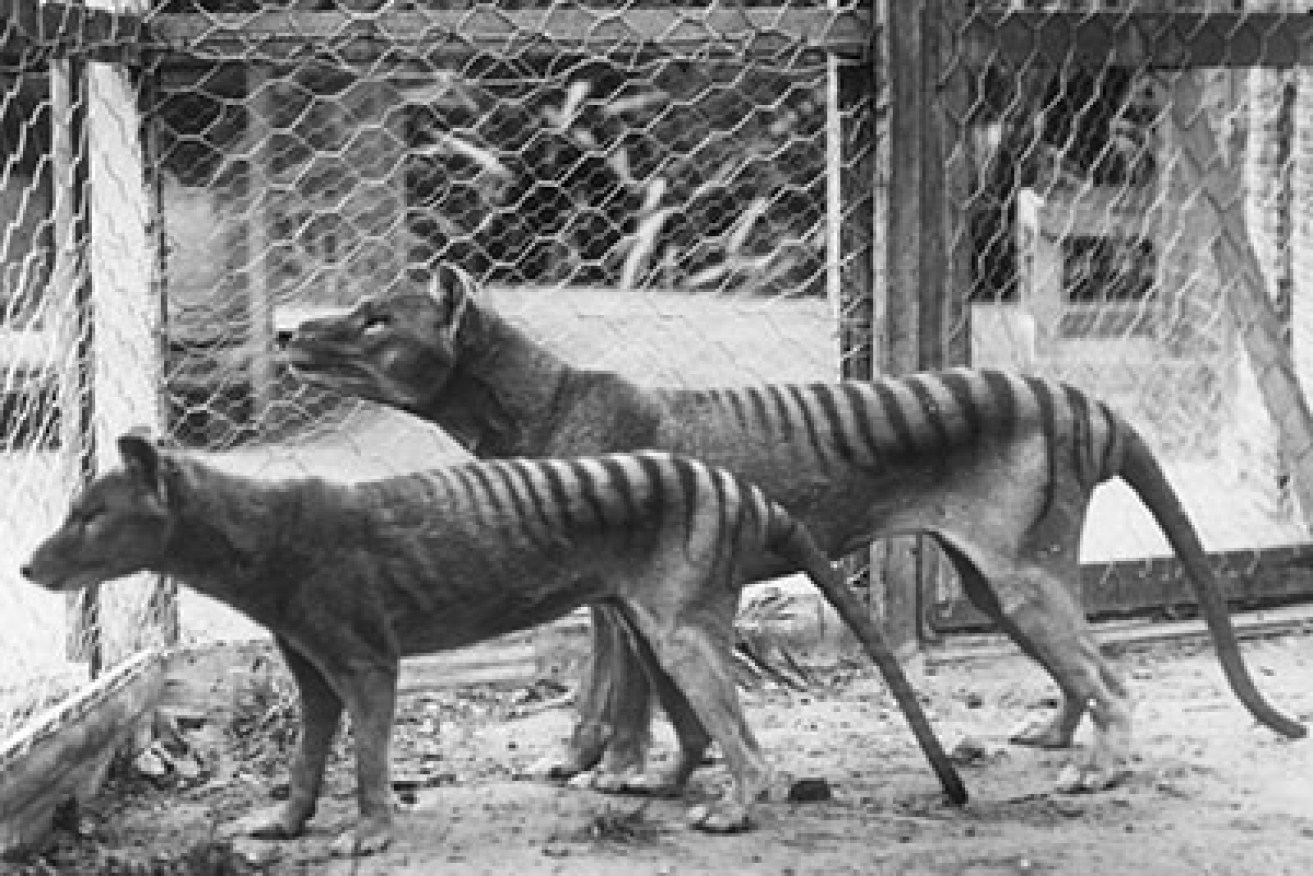Should we resurrect the Tasmanian tiger?

Jurassic Park remains one of the highest-grossing films in history. Released in 1993, it made over $1 billion at the box office, spawned three sequels, a theme park in Florida, and became a cultural touchstone.
The film’s huge success, its enduring legacy, and the fact it got a reboot this year, all suggest there’s more to the franchise than just CGI dinosaurs and dramatic chase scenes.
Scratch beneath the surface, and it taps into a much broader conversation about wildlife preservation, extinction, and the ethics of playing God.
• Five endangered species released into the wild
• Tasmania swift parrot faces extinction
• UNESCO decision ‘endorses’ Reef action
Scientists at Harvard University have reignited that conversation in recent weeks, when they successfully synthesised mammoth DNA and spliced it into a living elephant cell.
The news sent shockwaves throughout the scientific community and provoked more questions than it actually answered. Chief among them – just because we can bring a species back from the dead, should we?
Please explain …
Before getting into the ethical implications of the work, it’s worth understanding the process behind the recent breakthrough.

It may seem like the stuff of science fiction, but hairy mammoths could once again roam the earth. Photo: AAP
The Harvard experiment was made possible thanks to recent advances in genetic mapping, which enabled scientists to create, for the first time, an accurate DNA blueprint for a mammoth. By comparing this to an elephant, its distant cousin, scientists were able to see where the two species diverged.
Having figured out the difference on a genetic level, scientists started replacing individual DNA strands in an elephant cell with those from a mammoth. The theory being – if you can transform an elephant cell into a mammoth cell, you can eventually use these to clone the animal, and reintroduce the species.
The Harvard experiment resulted in a petri dish containing elephant cells infused with a just a small fraction (0.0001 per cent) of mammoth DNA. And while that might not seem like much, it offers an eventual roadmap to a real-life Jurassic Park.
Billy and the Cloneasaurus
So what’s the catch? Well, in order for scientists to create DNA blueprints, splice cells, and start growing baby dinosaurs in test tubes, they need to have the original source material. And while DNA can be preserved for a long time under the right conditions (the current record for fossilised bones is 700,000 years), it will eventually decay and disappear.
According to most estimates, dinosaurs became extinct around 66 million years ago. So the odds of finding workable DNA for a T-Rex or Stegosaurus are approximately zero.
That being said, the recent breakthroughs do raise the possibility that more recently departed species could be genetically coded, spliced in a dish, and reintroduced when the technology catches up. And in Australia, that means all eyes on the Thylacine, better known as the Tasmanian Tiger.
Tasmanian tigers for everyone!
The last known Tasmanian Tiger died in captivity in 1936. Since then, several attempts have been made to try and bring the species back from extinction. The most famous was the Thylacine Cloning Project launched in 1999 by the Australian Museum in Sydney. That research was halted in 2005 due to the poor quality of the DNA samples available.

You don’t know what you’ve got ’til it’s gone: Two of the last known Tasmanian tigers. Photo: AAP
Recent work by Dr Seymour Walbert and Professor Julia Svenmaker from the University of Melbourne has produced more promising results. Much like their Harvard counterparts, the pair were able to splice a gene from the extinct Tasmanian Tiger into a Tasmanian Devil, a genetically close relative.
While it’s groundbreaking work, Professor Svenmaker is the first to admit there’s a long way to go. Speaking to the World Daily Report last year, she claimed: “There may be 20 years separating us from being able to reproduce a living species of the extinct animal.”
That gives us plenty of time to grapple with the ethical and philosophical implications of these breakthroughs. And that means tough questions that go far beyond animal extinction, and to the very heart of existence.
Are animals simply DNA strands that can be mixed in jar? Where do they acquire their unique personality, temperament, and instinct? How do you teach the first Tasmanian Tiger born in a test tube to be a Tasmanian Tiger?
If it’s any consolation, all the above remains nothing more than hypothesis and scientific theory at this point in time. But the DNA splicing technology does suggest a future where we can reprogram certain species genetic code in order to improve their survival chances.








